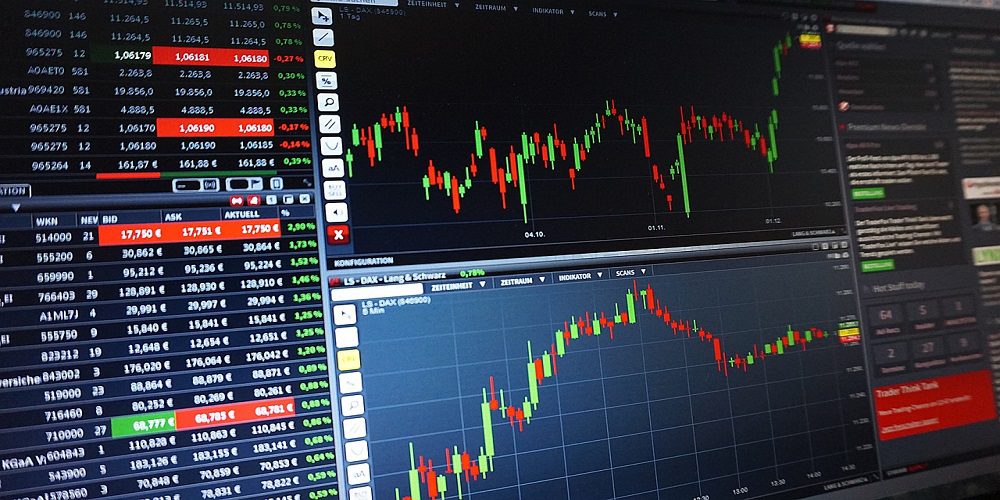Welcome to our blog, where we unravel the mysteries and complexities of the financial world! Today, we are diving headfirst into one of the most influential players in global markets: Dow Jones. Whether you’re a seasoned investor or just starting your journey towards financial literacy, understanding the role of Dow Jones is essential. Join us on this comprehensive overview as we demystify its significance, explore its origins, and uncover its impact on both Wall Street and Main Street.
What is Dow Jones?
Dow Jones is a stock market index that measures the performance of 30 large, publicly traded companies in the United States. It is one of the oldest and most widely used indexes in the world and is often used as a barometer for the health of the U.S. economy.
The Dow Jones Industrial Average (DJIA) was first calculated in 1896 by Charles Dow, who co-founded Dow Jones & Company, and originally contained just 12 stocks. The index has been expanded and now includes 30 stocks that are chosen by a committee based on their market capitalization, liquidity, and industry representation.
The DJIA is a price-weighted index, meaning that stocks with higher prices have more influence on the index’s movement. It is calculated using a simple average of the prices of the stocks in the index and is not adjusted for inflation.
The DJIA is one of several stock market indexes produced by Dow Jones & Company, including the Dow Jones Transportation Average and the Dow Jones Utility Average.
History of Dow Jones
The Dow Jones Industrial Average (DJIA) is one of the most widely recognized stock market indices in the world. It consists of 30 blue-chip stocks that are publicly traded on the New York Stock Exchange. The index is named after Charles Dow, who founded Dow Jones & Company in 1882.
The index was first published on May 26, 1896, and it closed at a level of 40.94. In the early 1900s, the index reached its highest level ever, closing at 1,023.61 on November 3, 1929. This was followed by the Great Depression and a long period of stagnation for the index.
It wasn’t until 1954 that the DJIA once again reached its pre-Depression high. From there, it continued to steadily rise until reaching another all-time high of 11,722.98 on January 14, 2000. The dot-com bubble burst soon after, and the DJIA plunged to below 7,000 by 2002.
After bottoming out in March 2009 at 6,547.05 in the midst of the global financial crisis, the DJIA staged an impressive rally and once again topped out above 18,000 in December 2014. It then entered a period of volatility and has been seesawing between 15,000 and 20,000 ever since. As of September 2018, the DJIA is currently trading just below 27,000 points.
What does Dow Jones do?
Dow Jones is a financial news and information provider that offers real-time and historical data on markets, businesses, and economies around the world. The company also provides analysis and commentary on these topics through its flagship publication, The Wall Street Journal. In addition to the Journal, Dow Jones publishes other well-known titles such as Barron’s and MarketWatch.
Dow Jones’ main competitors are Bloomberg L.P. and Thomson Reuters.
How does Dow Jones make money?
Dow Jones & Company, Inc. is a global provider of news and business information, delivering content to consumers and organizations around the world across multiple formats, including print, digital, mobile, and video.
Dow Jones has four main revenue streams: advertising, subscriptions, licensing, and other fees.
Advertising is the largest source of revenue for Dow Jones, accounting for around 50% of total revenues in 2017. Advertising revenues are generated through both online and offline channels, with the majority coming from online advertising. Online advertising revenues are driven by traffic to Dow Jones’s websites and apps, which totaled nearly 1.4 billion visits in 2017.
Subscriptions accounted for around 30% of Dow Jones’s total revenues in 2017. The company has a portfolio of subscription-based products, including The Wall Street Journal, Barron’s, Factiva, DJX (an index data product), and Smart Investor (a personal finance product). Subscription revenues are generated through both direct-to-consumer and business-to-business channels.
Licensing and other fees make up the remaining 20% of Dow Jones’s total revenues. This category includes fees associated with licensing Dow Jones content and data to third parties, as well as events and other miscellaneous items.
Dow Jones Industrial Average (DJIA)
The Dow Jones Industrial Average (DJIA) is a stock market index that measures the performance of 30 large, publicly traded companies in the United States. The DJIA is one of the oldest and most widely followed stock market indices in the world. It is also one of the most commonly used benchmarks for measuring the performance of the US stock market.
The DJIA was first calculated on May 26, 1896, by Charles Dow, who founded Dow Jones & Company, a financial news and information provider. The DJIA was created as a way to track the performance of the US stock market and to provide an indication of how the US economy was performing. The index originally consisted of 12 stocks, but has since expanded to include 30 stocks.
The stocks included in the DJIA are chosen by a committee from Dow Jones & Company. The committee considers various factors when choosing which stocks to include in the index, such as market capitalization, liquidity, and industry representation.
The DJIA is a price-weighted index, meaning that each stock’s weight in the index is based on its share price. The higher a stock’s price, the greater its weight in the index. This method of calculation means that changes in stock prices have a greater impact on the index when those stocks are more expensive than others.
The DJIA is calculated using prices from The Wall Street Journal’s website. It is updated every 15 seconds during trading hours (9:30 a.m.–4 p.m.).
Other products and services offered by Dow Jones
Dow Jones offers a wide range of other products and services in addition to its flagship Wall Street Journal. These include Dow Jones Newswires, Factiva, Barron’s, MarketWatch, and WSJ Pro.
Dow Jones Newswires is a real-time financial news service that provides breaking news, analysis, and commentary on the markets. Factiva is a global news database that gives users access to millions of articles from over 33,000 sources. Barron’s is a leading financial magazine that covers investments, stocks, and market trends. MarketWatch is a financial news website that provides real-time stock quotes, analysis, and market data. WSJ Pro is a premium subscription service for professionals that includes exclusive content, tools, and resources.
Impact of the Dow Jones on the Economy
The Dow Jones Industrial Average (DJIA) is a stock market index that tracks the performance of 30 large, publicly traded companies in the United States. The DJIA is one of the oldest and most widely recognized stock market indexes in the world.
The DJIA is generally seen as a barometer for the overall health of the U.S. economy. When the DJIA is doing well, it typically indicates that businesses are doing well and that the economy is growing. Conversely, when the DJIA is struggling, it can be an indication that businesses are struggling and that the economy may be slowing down or even contracting.
While the DJIA isn’t a perfect gauge of the economy (it doesn’t track all companies, for example), it’s still one of the most important indicators that investors and economists watch.
Conclusion
The Dow Jones Industrial Average plays a critical role in understanding the health of the US economy. By tracking and analyzing its performance over time, we can gain insight into how companies are doing and predict future trends. The Dow is an important indicator for investors to pay attention to when considering their portfolios. Its historical data gives us insights into market cycles that could be beneficial in making decisions about investing in stocks or otherwise managing our finances.





























